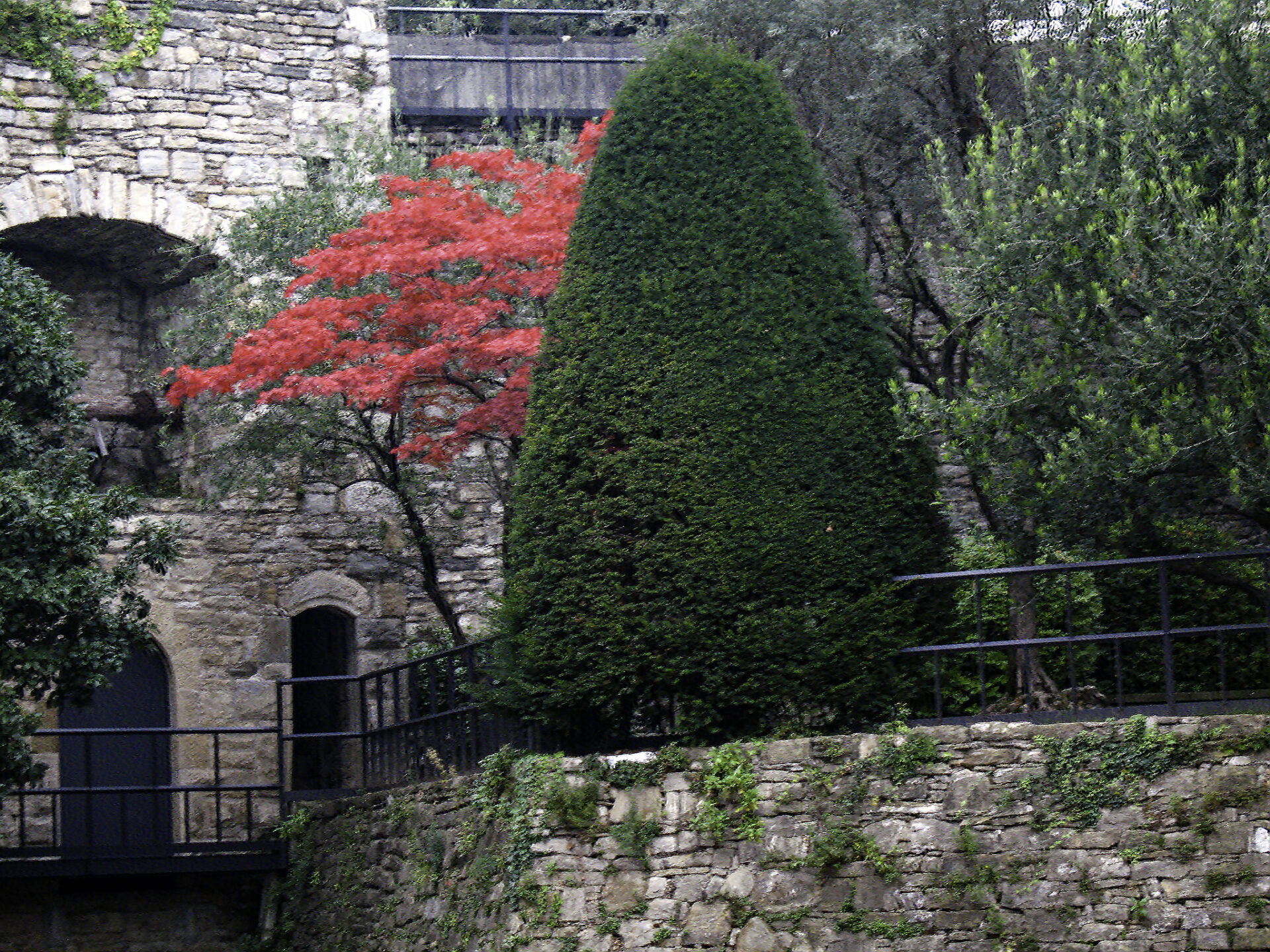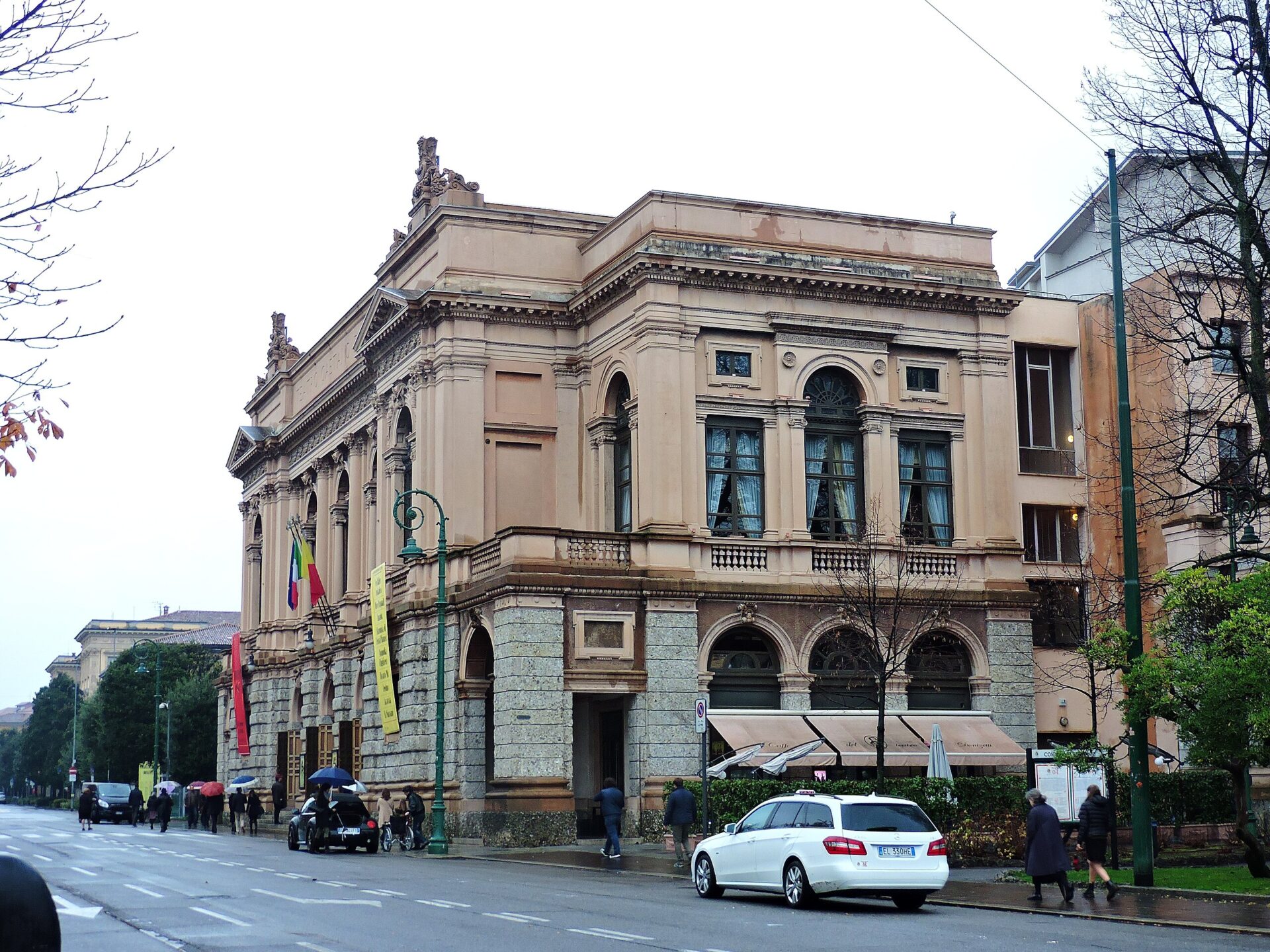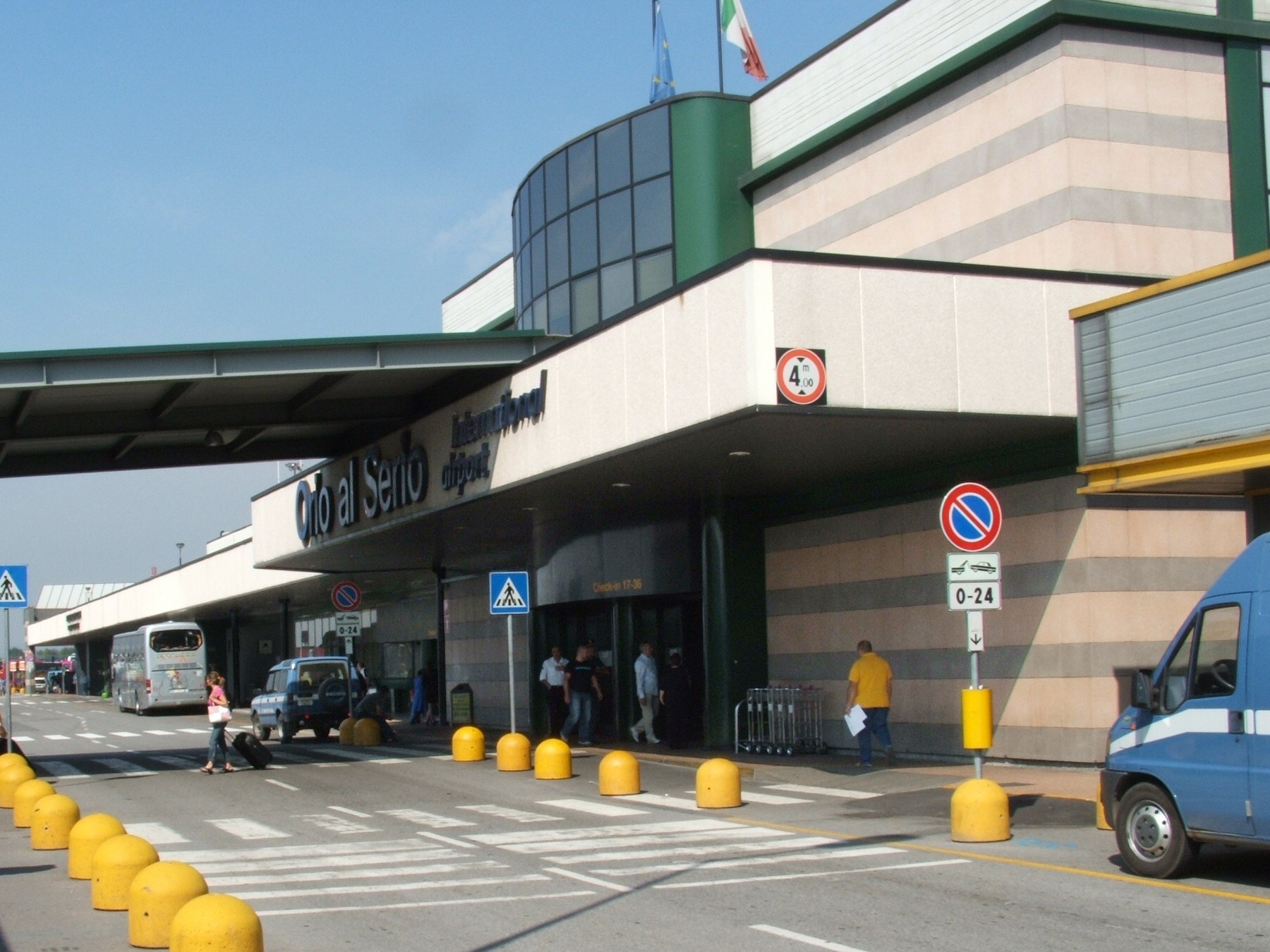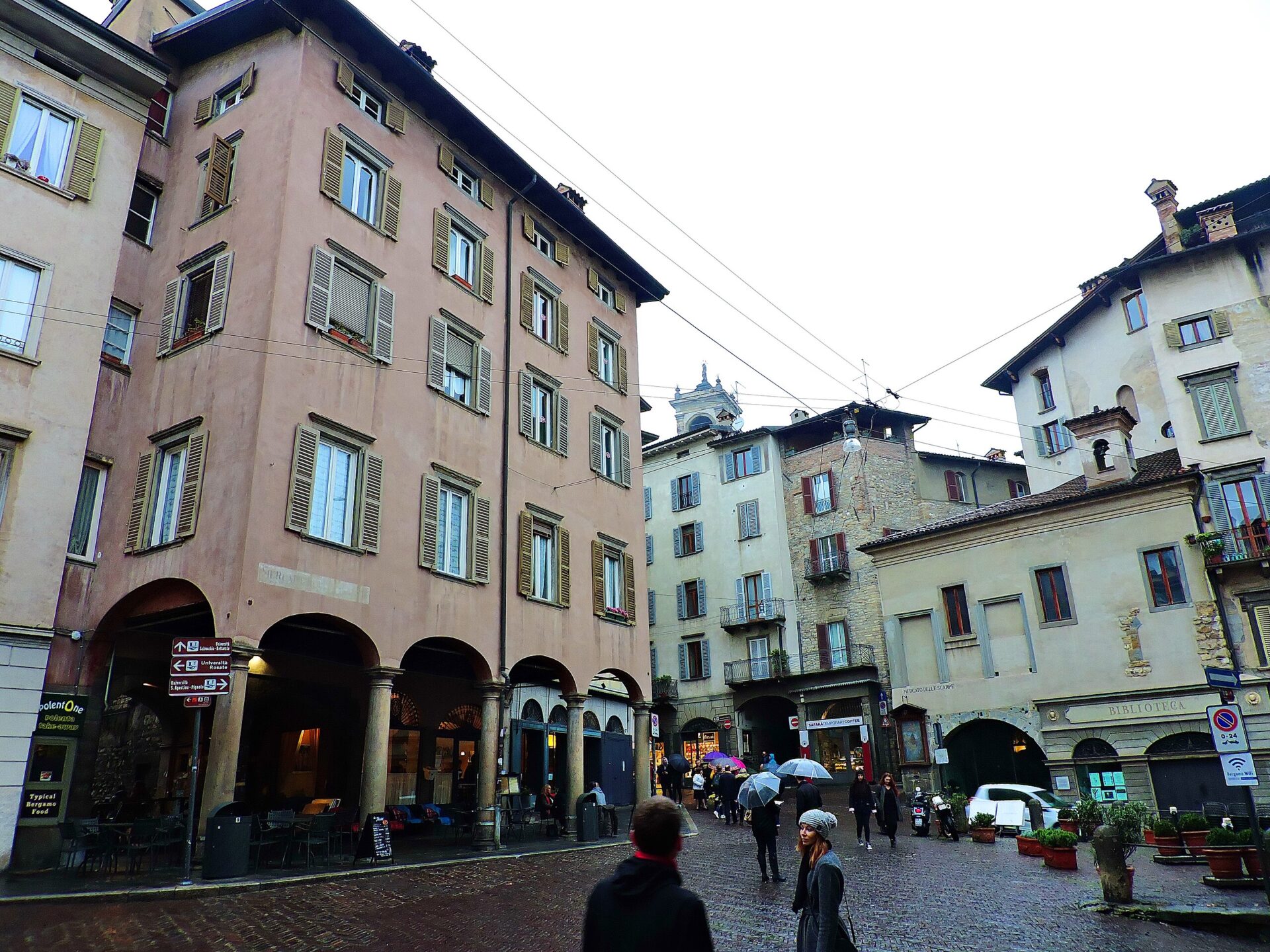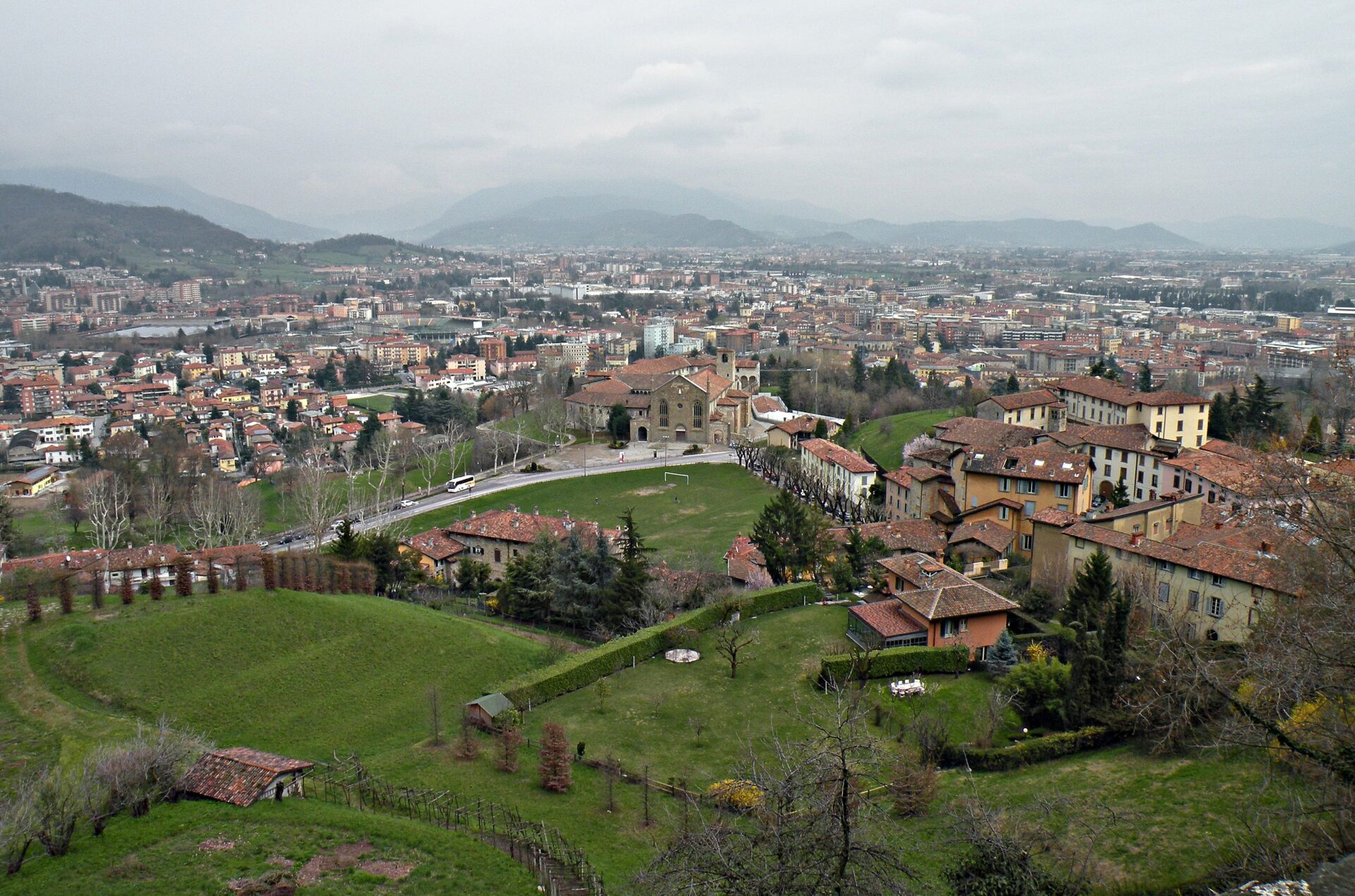When I first glimpsed Bergamo’s Città Alta from below, I couldn’t believe what I was seeing. This perfectly preserved walled city sits majestically on a hilltop, looking like something straight out of a Renaissance painting.
Unlike other Northern Italian towns I’d visited, Bergamo’s Upper Town completely changed my perception of what urban medieval charm could feel like.
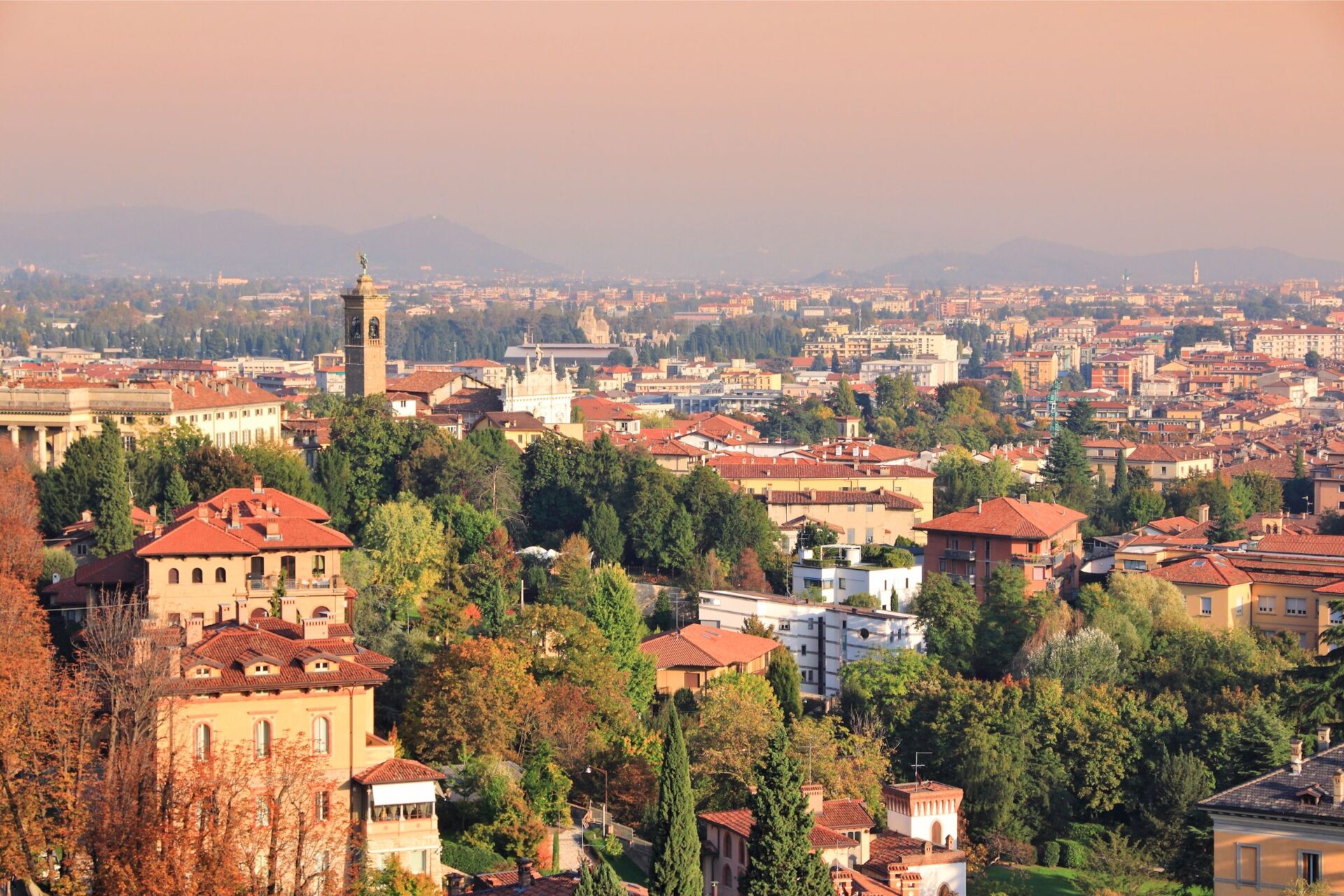
Walking through the ancient Venetian walls that have surrounded this “High City” for centuries, I felt transported to another time. The compact Piazza Duomo houses spectacular churches that seem too grand for such a small space.
What makes Città Alta special is how self-contained it feels – a complete medieval world you can explore entirely on foot.
The beauty of Bergamo lies in its authenticity. While tourists flock to Milan just an hour away, this gem remains relatively undiscovered. As I wandered the narrow cobblestone streets and stumbled upon tiny squares, I realized I’d found one of Italy’s best-kept secrets – a place where history feels tangible and the northern Italian light bathes everything in a golden glow unlike anywhere else.
The Journey Begins: First Impressions of Bergamo Alta
My first glimpse of Bergamo’s Città Alta left me speechless. This medieval upper town, perched above the modern city, offers a unique charm that separates it from other northern Italian destinations.
The Transformative Arrival
I stepped onto the historic funicular railway that connects the lower city to Città Alta. The wooden carriage slowly climbed upward, offering expanding views of the modern city below and the distant Alps.
“This isn’t just transportation—it’s time travel,” whispered a fellow passenger as we ascended the steep slope.
When I emerged from the funicular station, the transition was immediate and stunning. Gone were the modern buildings, replaced by stone pathways and medieval architecture that had stood for centuries.
The Venetian walls that surround Città Alta came into view, preserved nearly perfectly since the 16th century. Walking through one of the ancient gates, I felt transported to another era entirely.
The lack of cars and modern intrusions made the experience even more magical. Unlike larger tourist destinations, Bergamo’s upper town maintains an authentic atmosphere that feels lived-in rather than preserved solely for visitors.
Exploring Piazza Vecchia
The heart of Città Alta is undoubtedly Piazza Vecchia, a perfectly proportioned square that architect Le Corbusier once called “the most beautiful square in Europe.”
My first steps into this open space revealed:
- The impressive Palazzo della Ragione with its open loggia
- The elegant white marble fountain at the center
- Historic buildings housing small cafés with outdoor seating
Locals and visitors mingled freely in the square. I found a small table at a café and ordered a caffè, watching as the evening light transformed the stone buildings from cream to gold.
The bell tower, Torre Civica, chimed the hour, and I noticed how the sound echoed perfectly across the square. Something about the proportions of this space felt intentional, harmonious.
What struck me most was how the piazza served as a living room for the community rather than merely a tourist attraction.
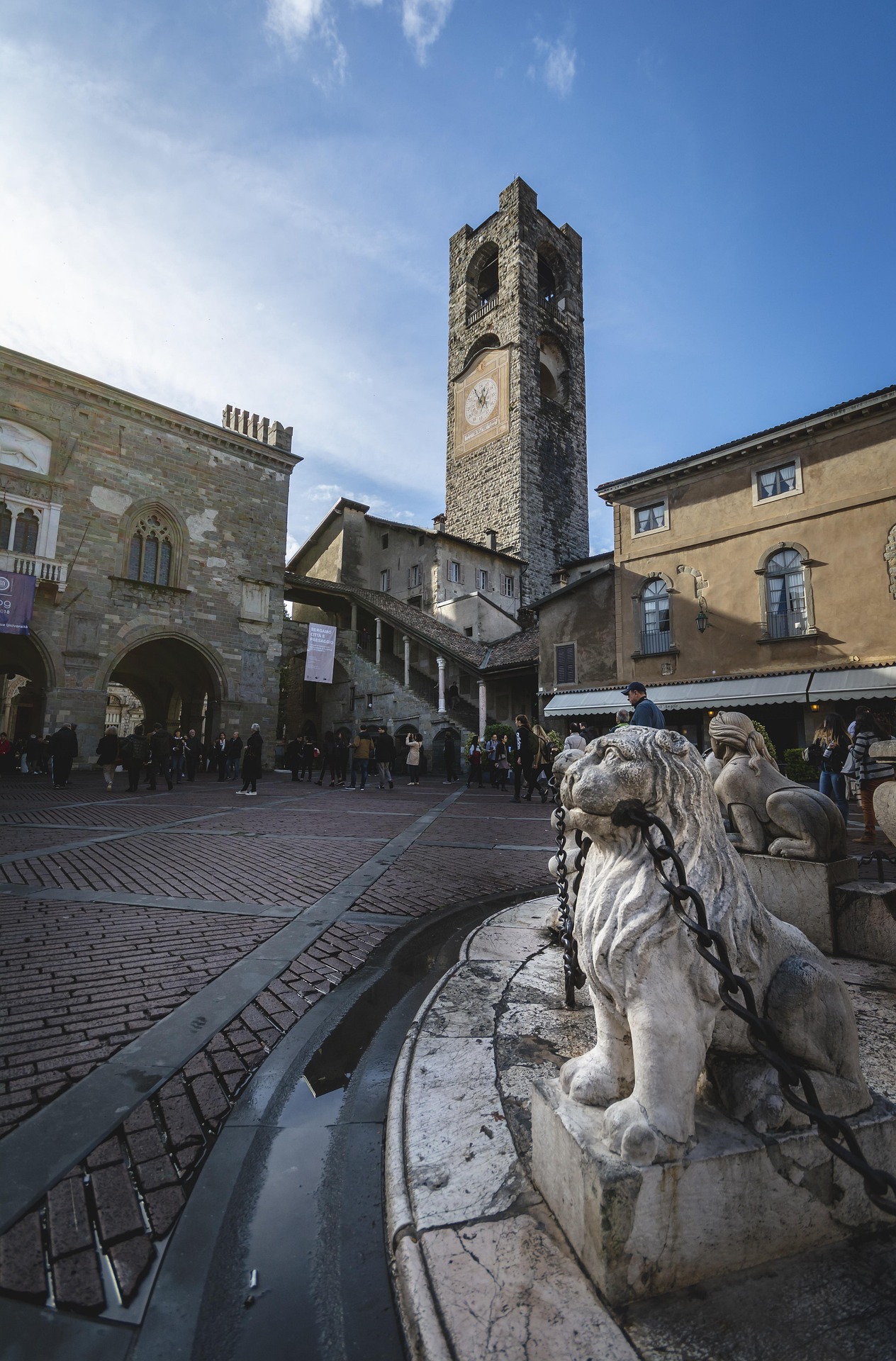
Architectural Marvels: Venetian Walls and Beyond
Bergamo’s Città Alta showcases some of Italy’s most impressive defensive and religious structures. The ancient walls and ornate basilicas tell stories of power, faith, and artistic achievement that transformed my understanding of Northern Italian architecture.
Bergamo’s Symbolic Venetian Walls
Walking along the massive Venetian Walls felt like stepping back in time. Built in the 16th century, these impressive fortifications completely encircle Città Alta and earned UNESCO World Heritage status in 2017.
The walls stretch for over 6 kilometers with stone bastions rising dramatically from the hillside. I spent a sunny afternoon strolling the tree-lined pathways atop these ancient defenses, taking in panoramic views of the lower town and distant Alps.
What surprised me most was how these military structures have transformed into social spaces. Locals jog along the walls while families picnic in grassy areas once meant for cannons. The four main gates, especially Porta San Giacomo with its gleaming white marble, offer perfect photo spots.
Renaissance Spectacles: Santa Maria Maggiore and Colleoni Chapel
The heart of Città Alta holds two architectural gems that left me speechless. Santa Maria Maggiore basilica dazzles with its ornate interior – every surface covered in intricate frescoes, tapestries, and gold detailing.
I stood mesmerized beneath the basilica’s massive dome, admiring ceiling paintings that seem to defy gravity. The wooden choir stalls feature remarkable inlaid scenes created by master craftsmen over 500 years ago.
Just steps away, the Colleoni Chapel presents a renaissance masterpiece of white and pink marble. Built as a mausoleum for military leader Bartolomeo Colleoni, its façade combines delicate patterns with bold sculptures in perfect harmony.
Inside, I found myself drawn to the tomb’s exquisite craftsmanship and the chapel’s peaceful atmosphere. These buildings showcase the wealth and artistic vision that flourished in Bergamo during the Renaissance era.
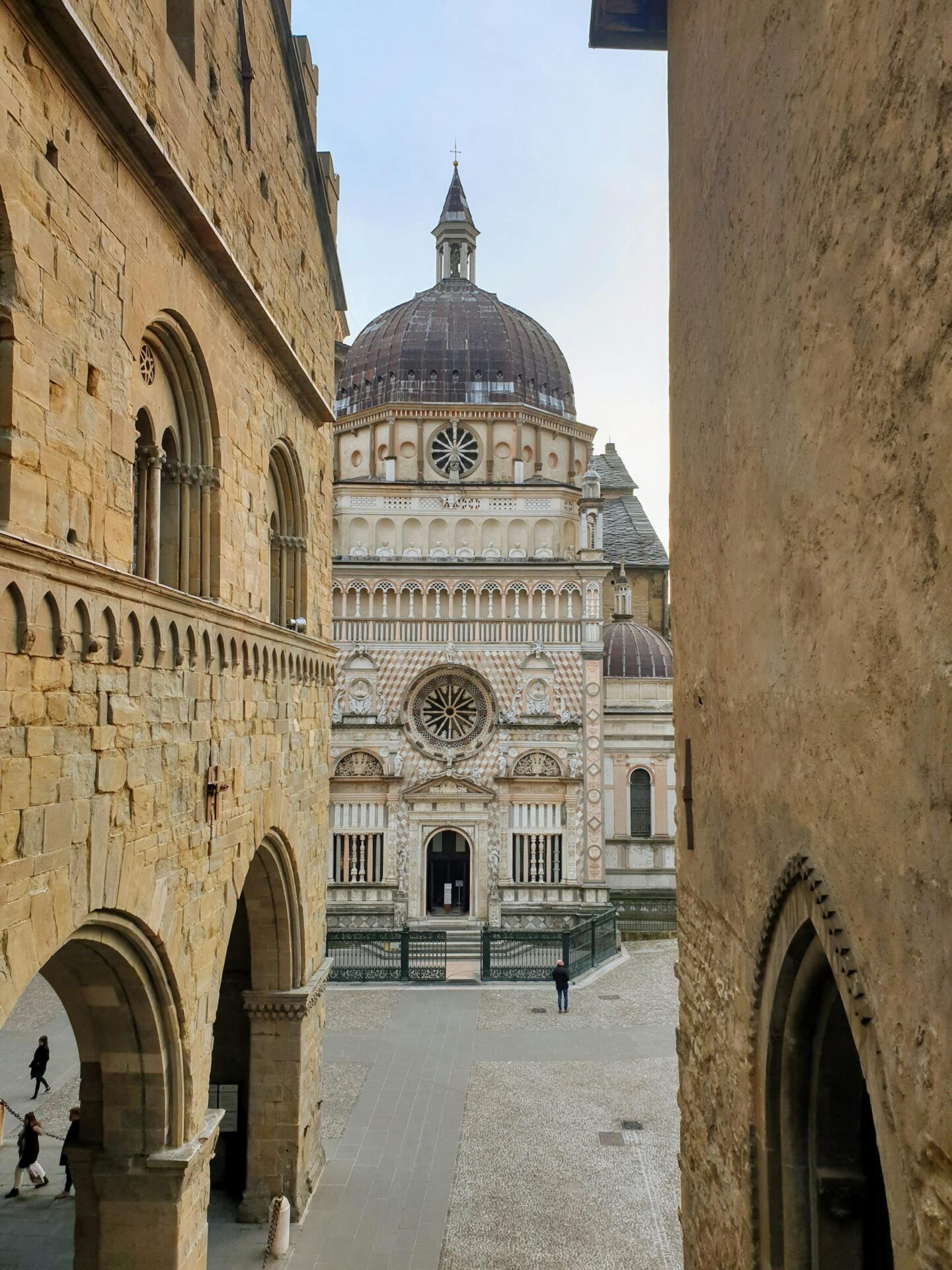
Cultural Touchstones: Bergamo’s Rich Heritage
Bergamo’s cultural legacy spans from ancient Celts to modern tourism, creating a unique tapestry that blends historical depth with contemporary accessibility.
The Spirit of Bergamo through Gaetano Donizetti
Walking through Città Alta, I constantly felt the presence of Bergamo’s most celebrated son, Gaetano Donizetti. This renowned 19th-century composer was born in the city’s humble quarters but rose to become one of Italy’s operatic giants.
His music echoes through Bergamo’s theaters and public spaces, giving visitors a soundtrack to their explorations. The Donizetti Theater in the lower city stands as a testament to his influence.
I was moved by how locals proudly preserve his legacy. They celebrate his contributions during the annual Donizetti Opera Festival, which draws classical music enthusiasts from around the world.
What struck me most was how Donizetti’s work symbolizes Bergamo’s journey through Italian unification, reflecting the city’s changing identity under Venetian rule and beyond.
Modern Connections: Ryanair and Accessibility
Bergamo’s ancient heritage meets modern convenience thanks largely to Ryanair’s decision to make Orio al Serio airport its Italian hub. This unexpected development transformed this northern Italian gem from overlooked to unmissable.
I arrived on a budget flight that landed just 5 km from the historic center. What amazed me was how this medieval wonderland, with its Torre Civica bell tower piercing the skyline, has become so accessible to travelers of all budgets.
The influx of visitors has revitalized Bergamo’s economy while bringing renewed appreciation to its cultural treasures. Local businesses now cater to international travelers without sacrificing authenticity.
Despite increased tourism, I discovered that climbing the winding streets to Città Alta still feels like stepping back in time. The balance between preservation and accessibility makes Bergamo a model for sustainable tourism in historic cities.
From the Heights to the Plains: Citta Alta to Citta Bassa
Bergamo’s unique character comes from its striking division between the historic Citta Alta perched on the hillside and the more modern Citta Bassa sprawling across the plains below. The contrast between these two worlds creates a fascinating journey for any visitor.
Navigating the Heights: The Funicular Network
The funicular railway connecting Citta Alta to Citta Bassa became my favorite way to travel between Bergamo’s two distinct worlds. Starting at Piazza Mercato delle Scarpe, this charming transport option offered stunning views that changed with each ascent and descent.
I found myself taking the funicular multiple times just for the experience itself. The short journey provided perfect photo opportunities of the Lombardy countryside stretching toward Milan.
For those who enjoy walking, there are scenic pathways winding down from the Upper City walls. These paths let me stop and admire the changing perspectives as I descended from medieval streets to modern boulevards.
The funicular system has been operating for over a century, making it both a practical transportation method and a historical experience in itself.
The Lower City’s Charms and Contrasts
Citta Bassa surprised me with its elegant architecture and lively atmosphere. While less touristic than the Upper City, the Lower City offers tree-lined avenues, stylish shops, and wonderful cafes where I could watch locals go about their daily lives.
The modern Lombardy architecture creates an interesting contrast with Citta Alta’s medieval structures visible on the hill above. I spent hours exploring Via XX Settembre, the main shopping street filled with boutiques and delightful gelaterias.
Unlike other Italian cities where the “new town” feels disconnected from historic areas, Bergamo’s Citta Bassa maintains a strong connection to its hilltop counterpart. The sight of Citta Alta’s walls and towers from below reminded me of their shared history.
Piazza Matteotti became my favorite spot to enjoy an aperitivo while planning my next journey up to the heights. The locals I met shared that many prefer living in the Lower City while enjoying Citta Alta for special occasions.
Gastronomy: Savoring Bergamo’s Culinary Delights
My taste buds found their true paradise in Bergamo’s Città Alta. The food here tells stories of tradition, agriculture, and centuries of cultural influences that have shaped this unique corner of Northern Italy.
Traditional Dishes: Polenta, Pasta, and Regional Ales
Polenta reigns supreme in Bergamo’s cuisine, a testament to the region’s agricultural roots. I watched in awe as local chefs transformed this simple cornmeal into culinary masterpieces. The creamy texture paired perfectly with rich meat stews and local cheeses.
The pasta here surprised me with its distinctiveness from southern Italian varieties. Casoncelli became my personal favorite – delicate pasta parcels stuffed with meat, raisins, and amaretti cookies, drizzled with sage butter. Each bite offered a perfect balance of savory and sweet notes.
Bergamo’s brewing tradition deserves special mention. The regional ales feature complex flavors that reflect the medieval brewing techniques still honored today. I enjoyed sampling these amber treasures alongside hearty plates of food at small family-run taverns tucked away in narrow medieval streets.

A Coffee Culture With a Venetian Twist
Coffee rituals in Bergamo reveal the city’s historical ties to Venice. Unlike the quick espresso shots common throughout Italy, Bergamaschi often linger over their brews in elegant cafés that date back centuries.
I discovered that the local coffee culture embraces unique combinations. Try the caffè alla bergamasca with its hint of grappa and lemon zest. This special preparation speaks to the region’s inventive spirit and willingness to put their own stamp on Italian classics.
Morning coffee in Città Alta became my daily ritual. I watched locals gather for animated conversations while enjoying pastries that blend Italian tradition with Austrian influences. This is another testament to Bergamo’s fascinating cultural crossroads.

